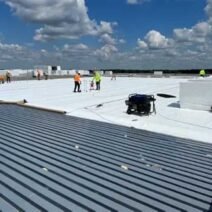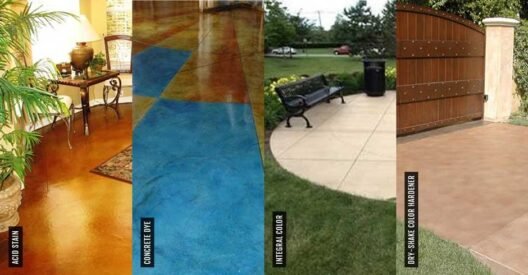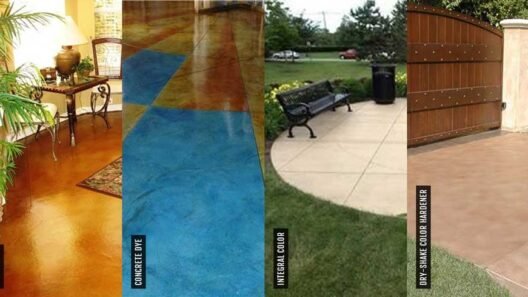Installing a patio is a significant investment that can significantly enhance your outdoor living space and increase your home’s value. However, without proper preparation, even the most beautiful patio can develop serious issues over time, notes Beyond Property Management experts. What excavation and drainage steps are essential before patio installation?
The essential steps include excavating 6-8 inches below the final grade, ensuring a 1-inch slope per 8 feet for drainage, installing a 4-inch gravel base, and adding proper drainage channels or French drains around the perimeter.
While this answer covers the basics, there’s more you need to know about specific soil types and regional weather patterns that could affect your patio’s longevity. Understanding these variables could mean the difference between a patio that lasts decades and one that needs repairs after just a few years.
How Does Your Soil Type Affect Patio Excavation Requirements?
Different soil types can dramatically impact how you prepare for patio installation. Clay soil, for instance, requires deeper excavation because it expands when wet and contracts when dry, which can cause significant movement in your patio. You may need to dig down 8-10 inches instead of the standard 6-8 inches and include additional drainage measures.
Sandy soil, while naturally better draining, might require less excavation depth but needs more compaction to create a stable base. Loamy soil generally provides the ideal foundation, requiring standard excavation depths and typical drainage solutions.
What Weather Considerations Should Impact Your Drainage Plan?
Areas with heavy rainfall or frequent snow need more robust drainage systems. In these regions, consider installing multiple drainage points and increasing the slope to 1.5 inches per 8 feet. Additionally, frost lines in cold climates may require deeper excavation to prevent frost heave damage.
For regions with occasional flooding, incorporating a French drain system around the entire perimeter is crucial, not just on the downhill side. This provides additional protection during extreme weather events.
Why Proper Compaction Is Critical During Each Stage Of Excavation
Each layer of your patio foundation needs proper compaction to prevent future settling. The native soil should be compacted first, followed by thorough compaction of each 2-inch layer of gravel base material. Using a plate compactor, make multiple passes over each layer until it’s firm.
Skipping proper compaction or trying to compact thick layers at once often leads to uneven settling later. This is particularly important around the edges of the patio, where the most stress occurs from foot traffic and furniture placement.
How To Test Your Drainage System Before Installing The Patio Surface
Before laying your patio surface material, it’s crucial to verify that your drainage system works effectively. Run a simple water test by flooding the area with a garden hose for at least 30 minutes. Watch how the water moves and identify any spots where it pools for more than an hour.
If you notice standing water, you may need to adjust the grade, add more drainage points, or install additional gravel in problem areas. This test can save thousands in repairs later and only takes a few hours to complete and adjust if necessary.
Special Excavation Considerations For Pergolas And Outdoor Structures
When planning a comprehensive outdoor living space, many homeowners opt to integrate their patio installation with pergola construction. Pergola posts require special foundation considerations that should be planned during the initial excavation phase to ensure proper coordination between the patio and structure foundations.
Pergola posts typically need concrete footings that extend 2-3 feet deep, depending on local frost lines and wind load requirements. These footings should be positioned and poured before or simultaneously with patio preparation to ensure proper drainage coordination between the structures.
The excavation process for pergola footings must adhere to the same drainage principles as patio installation, with proper grading to direct water away from both the patio surface and the pergola foundations. Modern pergola designs often incorporate weather management features that complement proper site drainage, ensuring a seamless experience. The outdoor louvered pergolas are engineered to withstand the sun, rain, and everything in between, making the foundation drainage even more critical to protect the investment in both the patio and overhead structure.
When excavating for combined patio and pergola installations, mark all post locations before beginning any excavation work. This prevents the need to disturb completed patio areas later and ensures optimal drainage patterns for the entire outdoor living space.
What Additional Excavation Steps Are Needed For Special Patio Features?
Built-in features like outdoor kitchens, fire pits, or retaining walls require special consideration during the excavation phase. These elements often need deeper foundations and may require separate drainage solutions.
For example, a built-in fire pit typically needs an additional 12 inches of excavation depth and specific drainage to prevent water accumulation. Outdoor kitchens might require concrete footings that extend below the frost line, and utility lines for gas, water, or electricity must be planned and installed during the excavation phase.
If you’re including lighting or irrigation systems, trenches for conduit and pipes should be dug before laying the base material. Planning these elements prevents having to disturb the patio surface later for modifications.
Conclusion
Now that you understand the critical nature of proper excavation and drainage, the most important next step is to test your soil type before any digging begins. Contact your local extension office for a soil testing kit, or collect a sample to bring to a landscape supply company for analysis – this simple step will help you determine exactly how deep to excavate and what specific drainage solutions your property needs.








